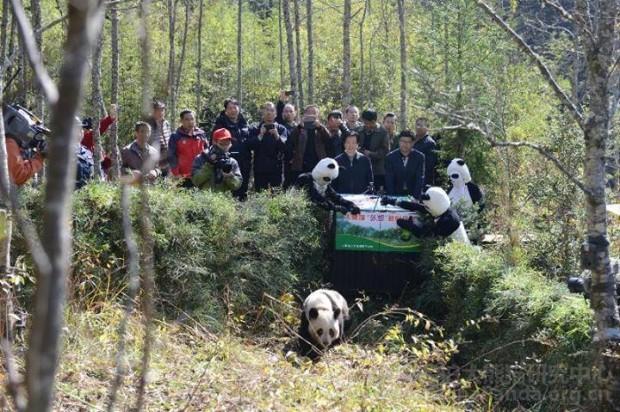Pandas International's Suzanne Bradon tells us why we are reintroducing pandas
Zhang Xiang has just begun her life as a wild panda. Her journey into the wild marks the second release of a captive born panda from the new reintroduction program developed at the China Conservation and Research Center for the Giant Panda (CCRCGP). The first to be released, Tao Tao, was recently examined in the wild and is adapting well one year after his release.

The cubs and the moms are monitored via closed circuit cameras during their time in the program. This gives the researchers working in the program valuable data while keeping physical contact with the bears to a minimum. The concept of the revised reintroduction project is to substantially reduce human contact, leaving the cubs with their mothers for a full two years to encourage natural behavior such as finding their own food, water and shelter.
Another important aspect of training for pandas returning to the wild is learning about other creatures they will share their habitat with. Professor Zhang Hemin, director of the CCRCGP, put forth the concept of introducing other animals into the final training enclosure. When two black bear cubs were in need of rescue, he agreed to take them for this project. The cubs are two years and 8 months old, weighing 40 kg, and will be used to train the panda cubs. The back bears will join Red Pandas in the enclosure area.
Recently, a wild boar was introduced into the final enclosure. At a recent conference in Hong Kong, Anette Yuen watched a short video of the boar running around inside the training field. Zhang Xiang knew from the smell that this creature was “not her kind” and ran to Zhang Ka for help. Zhang Xiang then climbed up a tree real fast. This is definately the reaction we wanted her to have. Our hopes are that all of the training will pay off and Zhang Xiang will have a great life in her new role as a free wild panda.
So, the one question that remains after discussing all of the training is “why”? Why are we preparing captive bred pandas to be released into the wild? The answer lies in genetics. Due to habitat fragmentation and reduced wild panda populations, scientists are concerned about the lack of genetic diversity in pandas in the wild. With any population, genetic diversity is the key to adaptation and survival. By introducing new genetic code into the wild population there is a greater chance of long-term viability (provided habitat protection remains in force). The reintroduction program, combined with programs to protect the habitat of extant panda populations is our best chance at ensuring a wild panda population recovery and continued species survival.
Source: Pandas International













